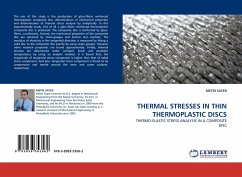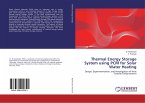Titanium films are growing in popularity, and are soon expected to replace copper for metallization purposes. However, the thermal stress behavior of titanium films had not been extensively studied, and therefore not clearly understood. Thus, the main goal of this work was to develop a systematic process to analyze and model the ds/dT evolution between 20ºC and 300ºC, in sputtered, titanium thin films. A biaxial stress state has been legitimately assumed. In the laboratory, titanium films, with a nominal thickness of 200 nm, were deposited on five different kinds of unheated substrates, by RF magnetron sputtering. These substrates included titanium plate, soda-lime glass and three kinds of p-type silicon wafers, having crystallographic orientations of (100), (110) and (111). X-ray diffraction was used to characterize the crystallographic evolution with respect to temperature. By utilizing a heating chamber and special tooling, the lattice spacings were measured in-situ, and the thermal stress behaviors were estimated with either the sin2 method or the d-spacing method.
Bitte wählen Sie Ihr Anliegen aus.
Rechnungen
Retourenschein anfordern
Bestellstatus
Storno








